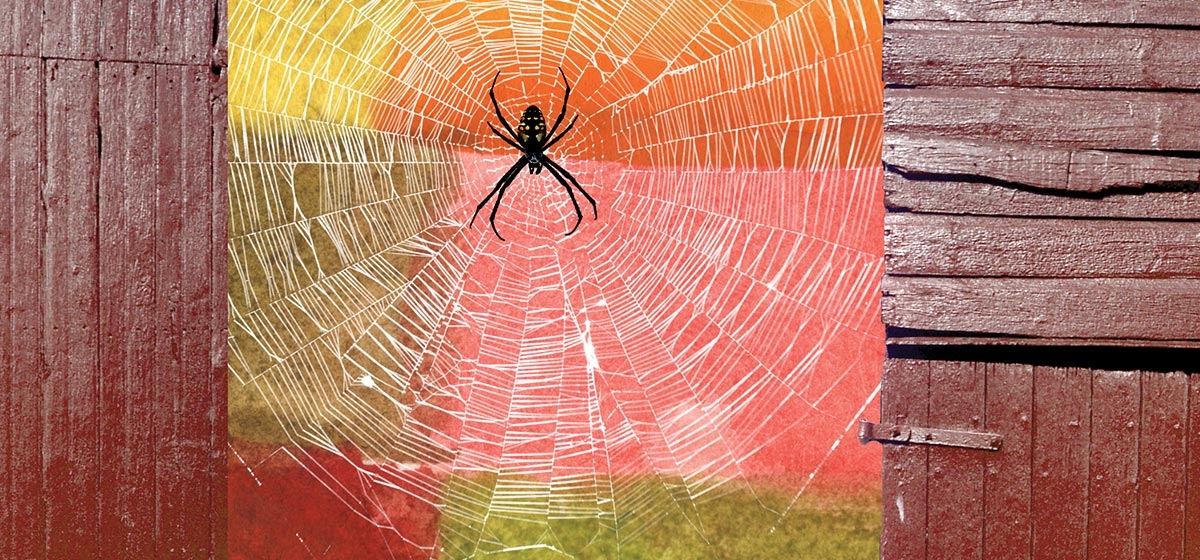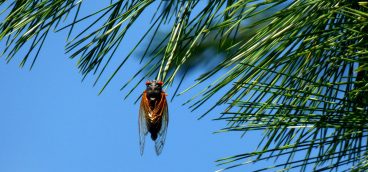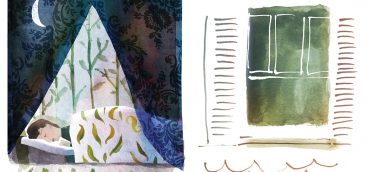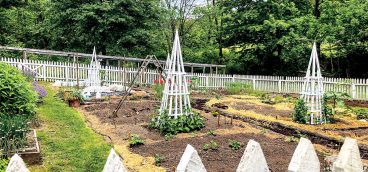Seeing Autumn Through a Spider’s Web

“I had never paid much attention to spiders until a few years ago. Once you begin watching spiders, you haven’t time for much else—the world is really loaded with them. I do not find them repulsive or revolting, any more than I find anything in nature repulsive or revolting, and I think it is too bad that children are often corrupted by their elders in this hate campaign. Spiders are skilful, amusing and useful, and only in rare instances has anybody ever come to grief because of a spider.” —E.B. White
For most people, autumn conjures thoughts of going back to school—notebooks, pencils, erasers and backpacks. Apple picking, perhaps. Or maybe the first frost.
I think of spiders.
When my children were young and we ran along our flagstone steps on autumn mornings to get to school by 8:10, we stopped often to look at the spider webs in the yew hedge, webs that appeared out of nowhere, webs that weren’t there—or weren’t noticeable—the day before. These webs, tacked to the edges of the yew needles, looked like little hammocks, or the kind of nets placed under a trapeze. Some were multi-tiered, and there were many of them, in the boxwood too, and on the ground euonymus. They were unlike any I’d seen before moving to the farm.
Our spiders were sheet weavers, the family Linyphiidae, the second largest spider family of the 42,000 spider species in the world, and 3,000 in the U.S. In our area, the most common sheet weavers are the bowl-and-doily spider and the filmy dome spider, but they are tiny, less than ⅜ of an inch so I’ve not seen one close enough to identify positively. Sheet weavers hang upside down on the underside of their webs and wait for insects such as gnats, flies, aphids, and mosquitoes. They bite them with their fangs, pull them down through the web, and wrap them in silk to eat later. These spiders also “balloon;” that is, they float on long strands of gossamer silk produced by spinnerets at the back of their abdomens. They perch on something tall like a fence post, stand on their tiptoes, raise their abdomens and release the silk, creating a sort of balloon, or parachute. When the wind catches them they are launched, landing wherever the breeze takes them, sometimes miles away.
Walt Whitman wrote a beautiful poem about ballooning:
“A Noiseless Patient Spider”
A noiseless patient spider,
I mark’d where on a little promontory it stood isolated,
Mark’d how to explore the vacant vast surrounding,
It launched forth filament, filament, filament, out of itself,
Ever unreeling them, ever tirelessly speeding them.
And you O my soul where you stand,
Surrounded, detached, in measureless oceans of space,
Ceaselessly musing, venturing, throwing, seeking the spheres to connect them,
Till the bridge you will need be form’d, till the ductile anchor hold,
Till the gossamer thread you fling catch somewhere, O my soul.
I asked Jerome Rovner, a spider expert and professor emeritus of biological sciences at Ohio University, about the seemingly sudden appearance of our sheet weavers, and he said they’d been there all along. “With cooler temperatures in the morning in September than July, dew may be more likely to coat the silk of the webs,” he said. And, he said, as spiders age and mature, their webs will be larger and may be built higher in the vegetation, making it more likely for humans to take notice.
If I may be so bold as to rewrite the extraordinary E.B. White: Once I began watching spiders, I saw them everywhere. There was a grass spider, or a “funnel weaver”— perhaps an Agelenopsis pennsylvanica—that had woven a funnel into my boxwood shrub. A flat section of the web extended across my garden wall and through clematis prunings I’d forgotten to remove—creating an extra clever trap, I thought. This spider hides inside the funnel and when it detects prey by vibration on the web, it races out to grab it—and it is fast. I have stood and watched, and seen only fleetingly its brown body and hairy legs. There’s a superstition about grass spiders: “When there is dew on their webs in the lawn in the morning, it will be a beautiful day.”
I have seen clearly the black and yellow garden spider, an orbweaver of the family Araneidae, which spins a spectacular zigzag in the middle of its web, called a stabilimentum. No one knows exactly why spiders create such decoration, though theories abound: as a decoy; to prevent birds from flying into the web; to use up extra silk; as thermoregulation; and others. The least likely explanation is to stabilize the web, even though that’s how stabilimentum got its name.
One thing is for certain, however,—a stabilimentum is not used by a spider to save the life of a pig, as Charlotte did in E. B. White’s classic children’s book, Charlotte’s Web, when she wove into her web such words as, “Some Pig,” “Terrific,” and “Radiant.” White chose for his main character a barn spider (Araneus cavaticus); however he used some editorial license here, because barn spiders do not use a stabilimentum.
In a 1952 letter to his editor, E.B. White explained Charlotte’s origin:
“One cold October evening I was lucky enough to see Aranea Cavatica spin her egg sac and deposit her eggs. (I did not know her name at the time, but I admired her, and later Mr. Willis J. Gertsch of the American Museum of Natural History told me her name.) When I saw that she was fixing to become a mother, I got a stepladder and an extension light and had an excellent view of the whole business. A few days later, when it was time to return to New York, not wishing to part with my spider, I took a razor blade, cut the sac adrift from the underside of the shed roof, put spider and sac in a candy box, and carried them to town. I tossed the box on my dresser. Some weeks later I was surprised and pleased to find that Charlotte’s daughters were emerging from the air holes in the cover of the box. They strung tiny lines from my comb to my brush, from my brush to my mirror, and from my mirror to my nail scissors. They were very busy and almost invisible, they were so small. We all lived together happily for a couple of weeks, and then somebody whose duty it was to dust my dresser balked, and I broke up the show.”
In our barn and outbuildings on the farm, we have an abundance of barn spiders, ¾ of an inch long, which are nocturnal and rebuild their webs nightly. I decided to follow White’s lead and try to hatch some myself. I cut adrift a few sacs, put them into a box, punched holes in it, and brought it inside. But my sacs were brown and shriveled and, unlike White, I had not seen a spider lay her eggs. What’s more, it was February, not October. Were the sacs too old, and did they still contain spiderlings? I put the box by the kitchen window for a few days but worried that was too cold so moved it to a warmer spot. A week later, nothing had happened. I asked Dr. Rovner if he knew any tricks and he kindly gave me a few, including looking with a magnifying glass for exit holes, but in the end his best advice was to “wait and see.” I waited. I checked the box periodically. Nothing. But nine days later in the early morning I turned on the light over the stove, opened the box carefully, and saw inside, crawling around on a newly made dragline, a tiny brown dot with a large grey abdomen. Once you begin watching spiders, you haven’t time for much else. I sat down to write this and went back to look at the baby spider. I poured tea and went back to look at the baby spider. When my husband called I told him with glee about our new resident, a baby spider.
In “Charlotte’s Web,” a minister tries to explain to his congregation how a spider could have possibly spun words in her web. He said, “The words on the spider’s web proved that human beings must always be on the watch for the coming of wonders.”
Oh my soul.





